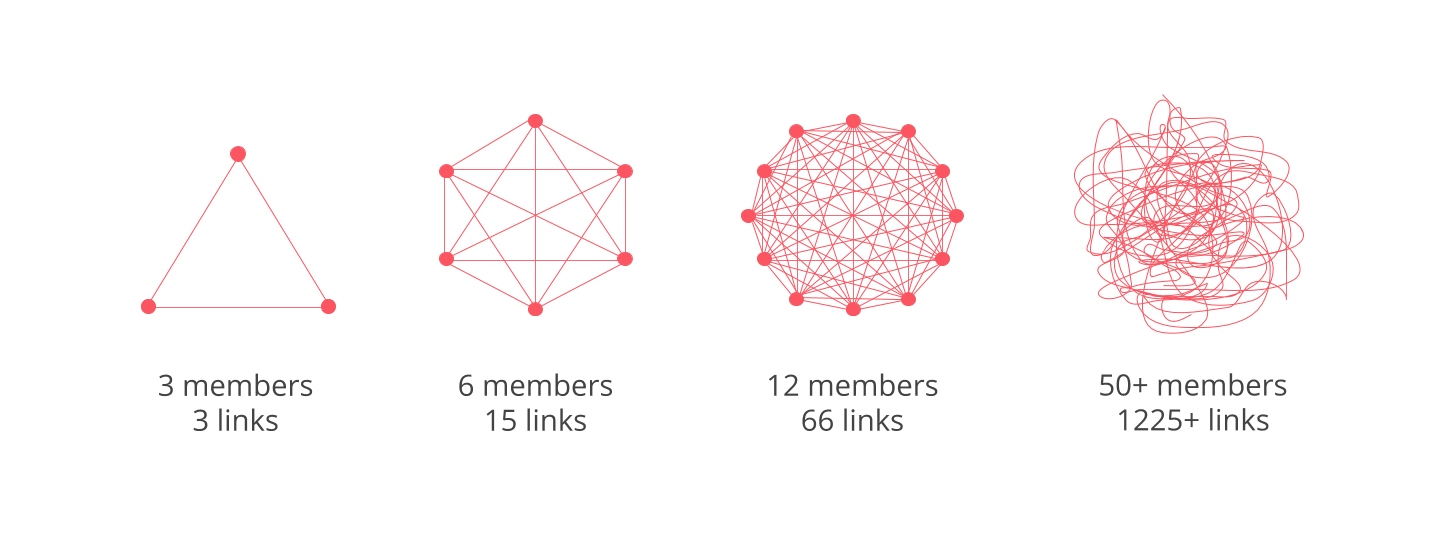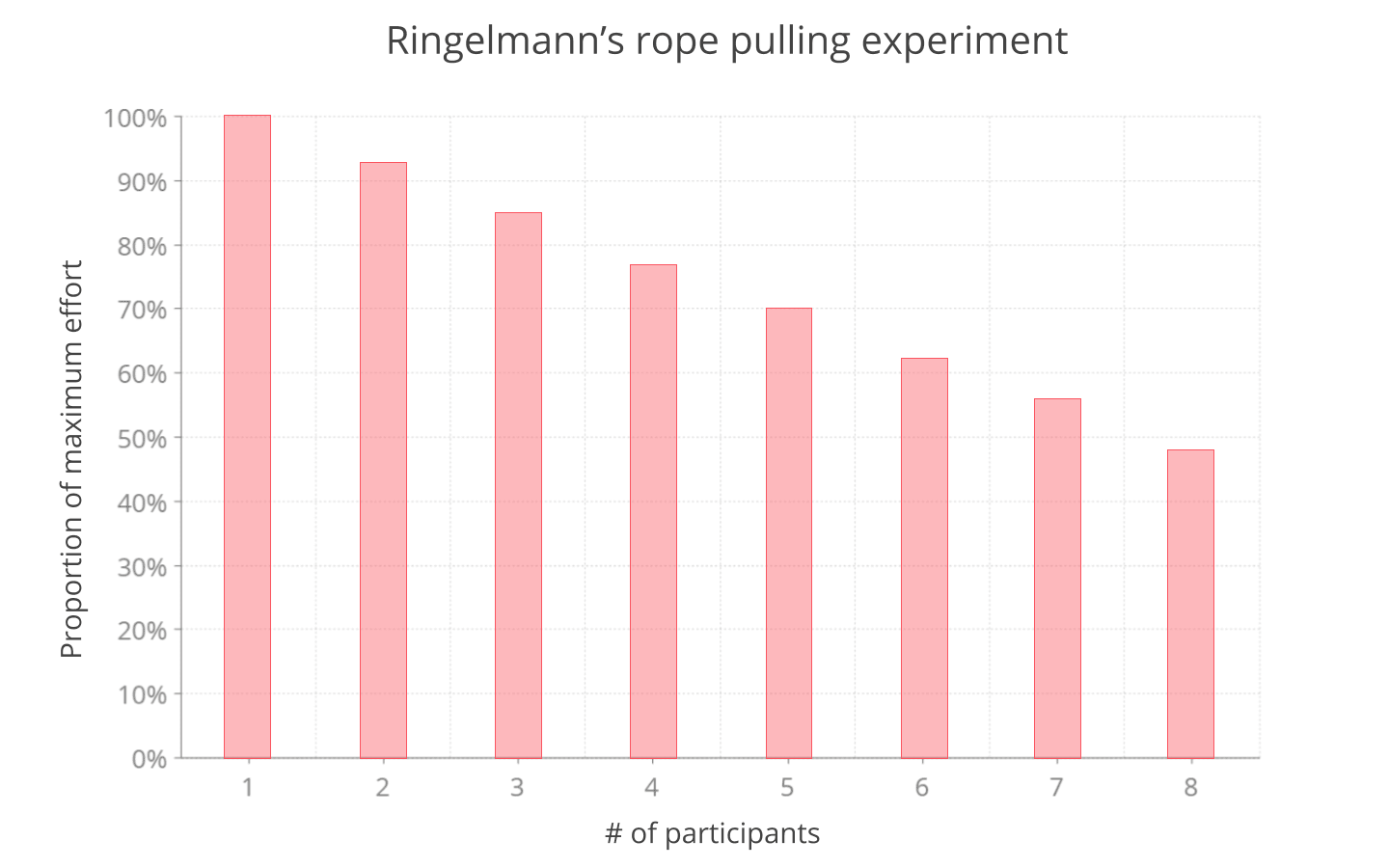Two-pizza teams: The science behind Jeff Bezos' rule

“Communication is a sign of dysfunction. It means people aren’t working together in a close, organic way. We should be trying to figure out a way for teams to communicate less with each other, not more.”
— Jeff Bezos, Founder and CEO of Amazon
Over the years, Jeff Bezos has delivered dozens of convention-defying nuggets of wisdom on how to build and run a business.
One of his memorable behind-the-scenes moments came during an offsite retreat. There was a discussion going about how to get groups to communicate more, when Bezos got up and said, “No, communication is terrible!”
Instead, he favors an idea of a decentralized, disentangled company where small teams can innovate, experiment, and test their visions – where independent ideas prevail over groupthink. And these small teams should be as small and autonomous as reasonably possible.
So what's the magic number for the ideal team size?
According to Bezos, the answer is – two pizzas.
Coordination costs
“Big teams usually wind up just wasting everybody’s time.”
— J. Richard Hackman, Prof. of Social and Organizational Psychology at Harvard University
Bezos believes that no matter how large your company gets, if you can’t feed a team with two pizzas, it’s too large. That limits a team to two to five people (depending on their appetites and diets and assuming they didn't skip breakfast).
The reasoning behind it is quite straightforward. More people = more of everything. More coordination, more bureaucracy, more chaos – basically, everything that slows things down. Individual performance suffers and people become less engaged.
As Harvard psychologist and expert on team dynamics J. Richard Hackman pointed out, “The larger a group, the more process problems members encounter in carrying out their collective work. [...] It’s managing the links between members that gets teams into trouble.” Look at this formula showing how the links grow at an exponential rate:

That means that a small startup of three people has three links to maintain. Doubling the size of this team would increase the number of links five-fold to 15. A larger team of 12 members has to worry about 66 links. And for a group of 50, the number of links skyrockets to 1225.

The more links you have to maintain, the higher the risk of mismanagement, misinterpretation, and miscommunication. The time and effort it takes to keep everyone on the same page becomes a snowballing nightmare.
This phenomenon is commonly known as Brooks’s law, which states that: “Adding human-power to a late software project just makes it later.”
It was coined by Fred Brooks in his 1975 book The Mythical Man-Month, where he points out the reasons why increasing the team size is more likely to delay a project than accelerate it:
It takes time for new team members to become productive. In addition to taking up the time of experienced members who need to train them, newbies may even make negative contributions, for example, if they introduce new bugs.
Communication overheads increase as the number of team members increases. Everyone needs to keep in sync, and that becomes increasingly difficult, the more people you add.
Some tasks cannot be easily divided by people in order to be completed faster. Brooks illustrates it with a simple example: “Nine women can’t make a baby in one month.”

With that in mind, Hackman suggests a rule of thumb for determining an ideal team size, echoing Bezos' two-pizza rule: “No double digits.”
Loss of motivation and sense of responsibility
The Ringelmann Effect
Throwing more people at a problem is one of the most common productivity traps that you can fall into, and not just because of the increase in coordination efforts. Studies show that as the size of a group increases, individual members tend to become less productive.
One of the earliest studies that tested this phenomenon was Ringelmann's rope pulling experiment. In 1913, Maximilien Ringelmann, a French professor of agricultural engineering, asked volunteers to pull on a rope as hard as they could. He found that when only one person was pulling on the rope they gave 100% of their effort, however, as more people were added the individual effort went down.

While each additional person does increase the overall productivity of the team, it happens at a rapidly decreasing rate. That essentially means that if you were the fourth member to join a team, you are likely to make a bigger impact on its productivity than if you were the 40th.
And when people within a team are slacking, the whole group dynamic shifts. Projects are less efficient, responsibilities are unbalanced, other employees are overworked and unhappy.
Social loafing
Ringelmann's rope-pulling experiment was recreated in the 1970s by Alan Ingham who confirmed that communication was not the only reason for the decreased effort, and that loss of motivation was to a large extent responsible for the declined performance.
He called this phenomenon “social loafing”.
The larger the team, the harder it becomes to extract the individual contributions and performance of each person. And if nobody would know how hard you are working, and regardless of what you do, the work would continue moving forward – why put in extra effort? The same rationale applies to people not voting, and bystanders not taking action when needed.
And it's not just a problem of large teams. Bibb Latané conducted shouting experiments and discovered that when subjects believed one other person was shouting, they shouted 82% as intensely as they did alone, but when they thought they were with five other people, their effort decreased to 74%.
“When groups get larger, you experience less social pressure and feel less responsibility because your performance becomes difficult, or even impossible, to correctly assess amidst a crowd.”
— Bibb Latané, PhD, Psychology
While social loafing might start out as unconscious disengagement, it can quickly morph into self-interested behavior.
There's no “strength in numbers”
Larger team size also makes people feel overconfident. The bigger the team, the more likely it is that the members will underestimate the time it would take them to complete a task.
In one of their experiments, researchers Bradley Staats, Katherine Milkman, and Craig Fox assigned the task of building the same Lego figure to several two-person and four-person teams. The smaller teams took 36 minutes to finish, while the larger ones took 52 minutes – over 44% longer. Yet the larger teams were almost twice as optimistic about how much time they would need.
Ambiguous ownership → compromises → mediocre products
The bottom line is that small teams outperform larger ones because they are able to coordinate more swiftly and effectively. They are better at creating an environment where individual contributions are observed and acknowledged.
The sad truth about successful projects is that they inevitably attract more and more people. As the team grows in size, ownership, responsibilities, and individual impact become blurred and ambiguous. And in the end, it's what leads to mediocre products shaped by countless compromises.
It may seem counter-intuitive to suggest that two heads are worse than one, but there’s a good body of evidence to support the two-pizza rule.
And Jeff Bezos is in good company. Jeff Sutherland, one of the inventors of Scrum and writer of The Scrum Guide, is also unequivocal on the matter – keep it at 7 people or fewer. Aaron Levie, the CEO of Box, echoes that sentiment, saying that “you want no more than five or 10 or 15 people on a team” if you care about speed and agility. According to Jason Fried, nearly all product work at Basecamp is done by teams of only three people.